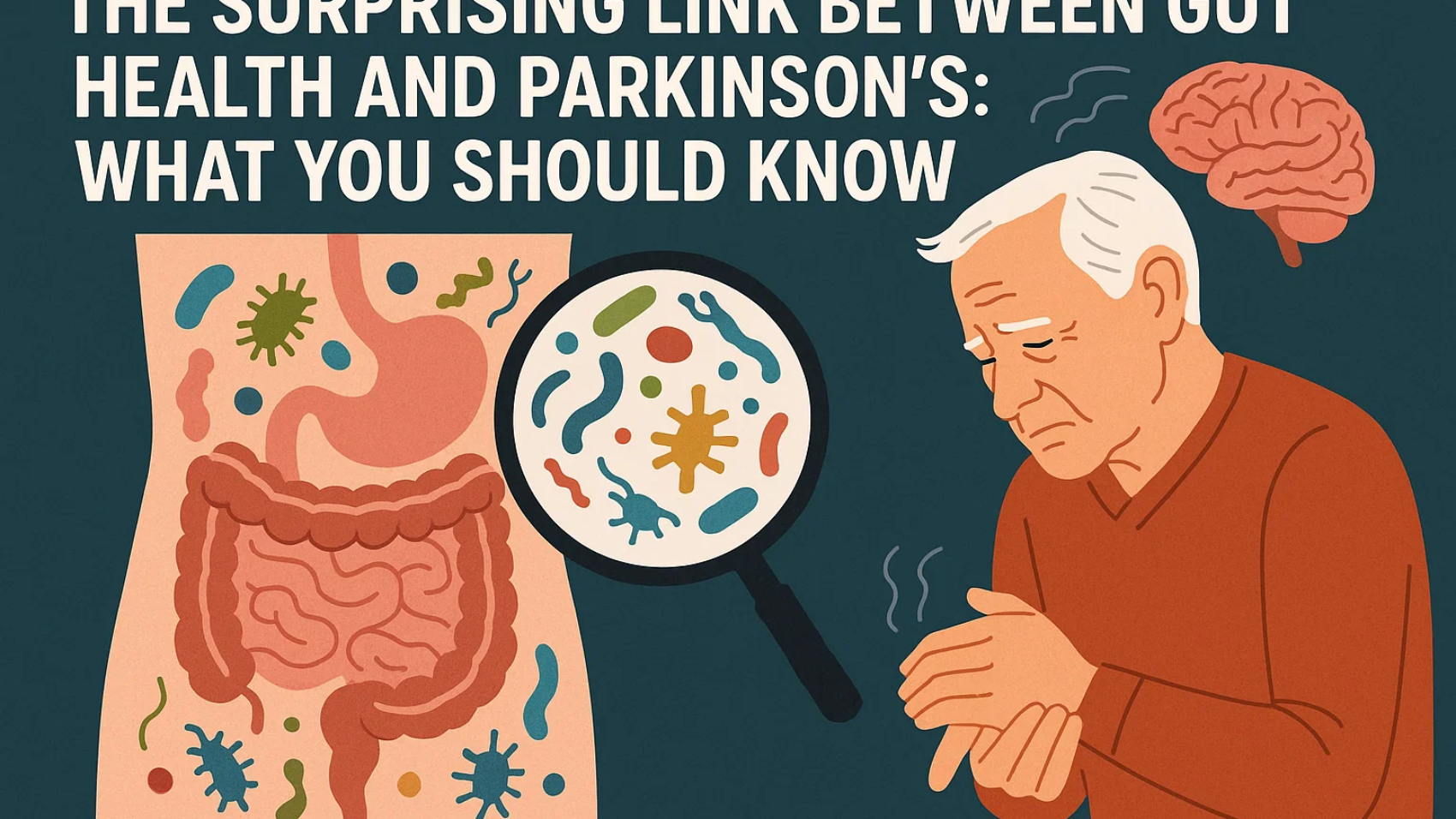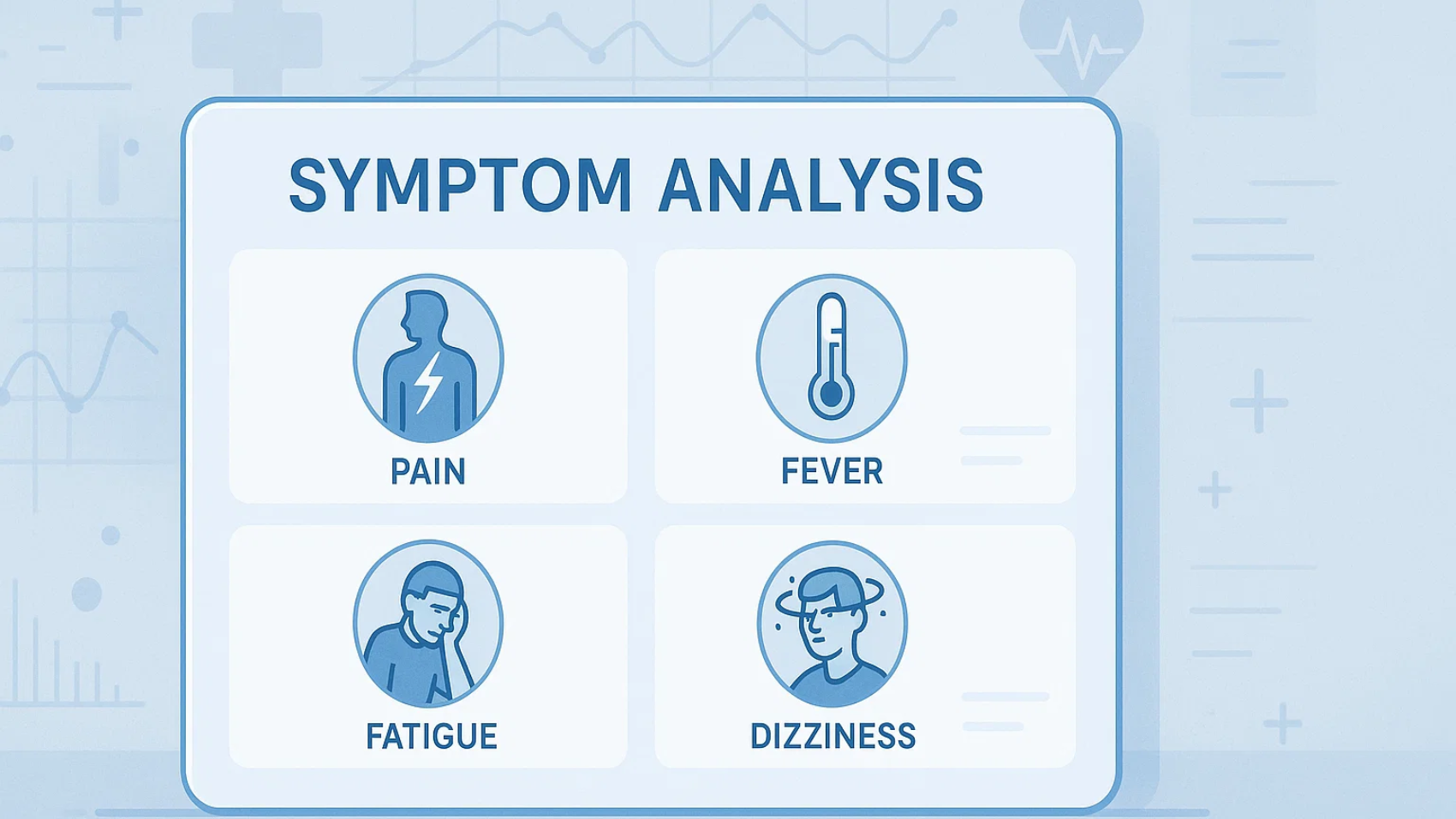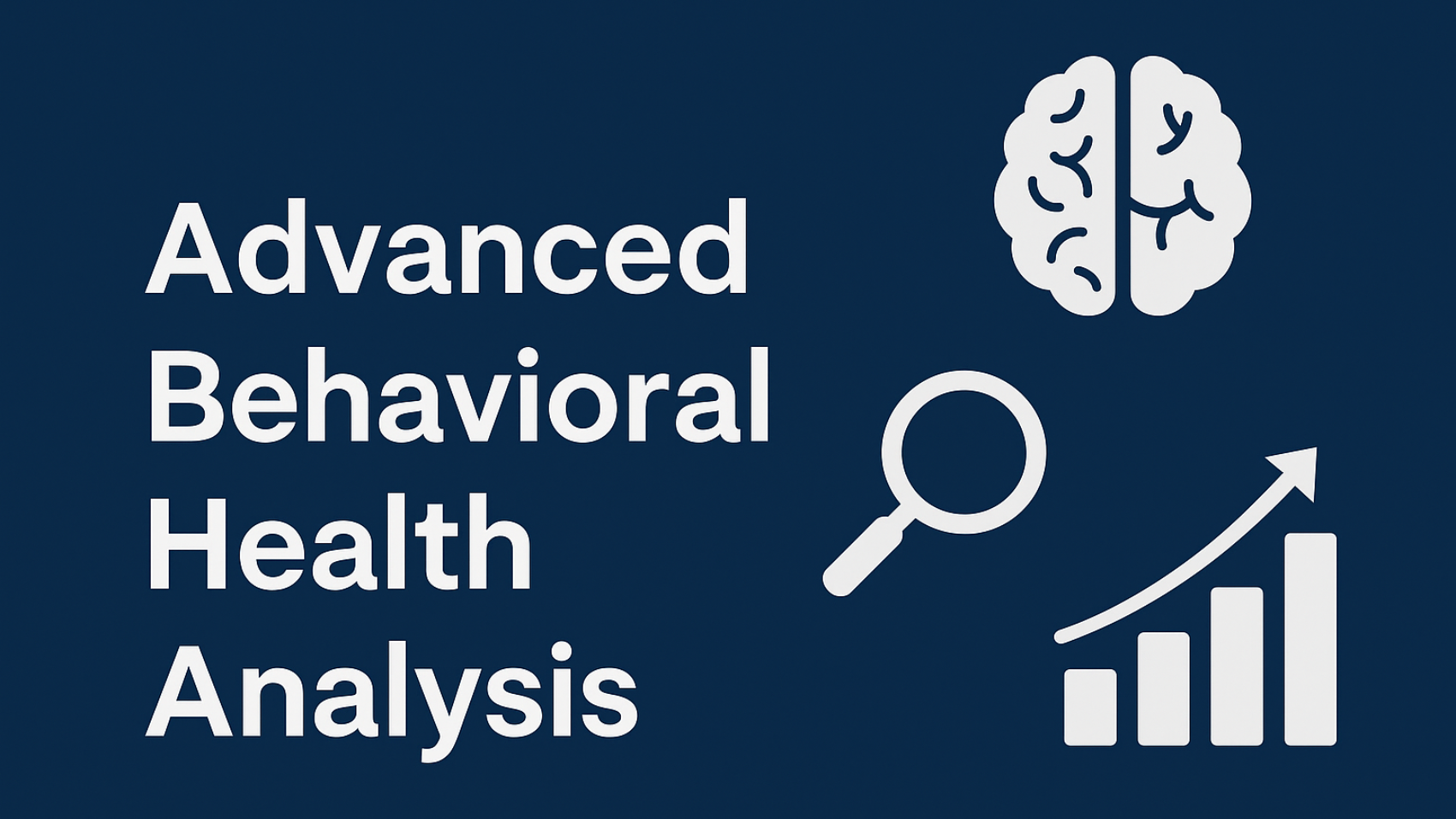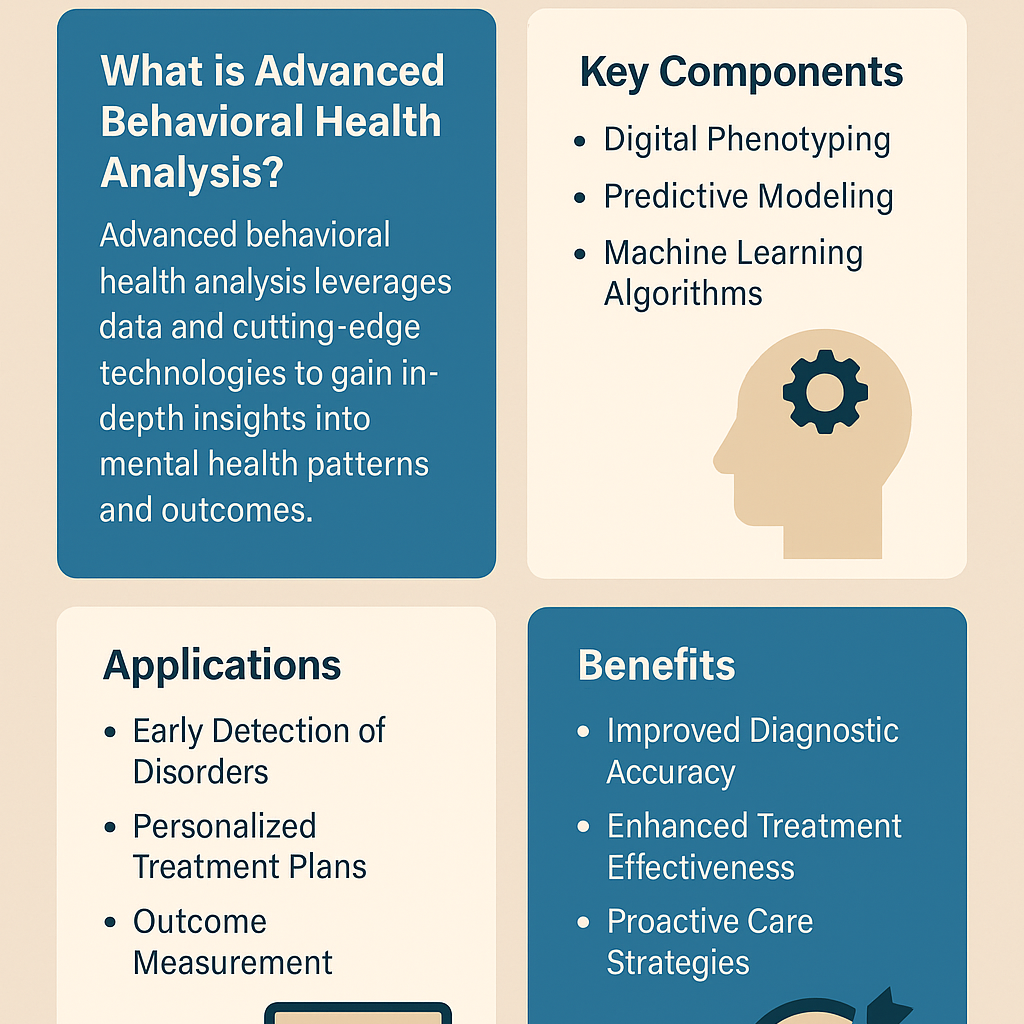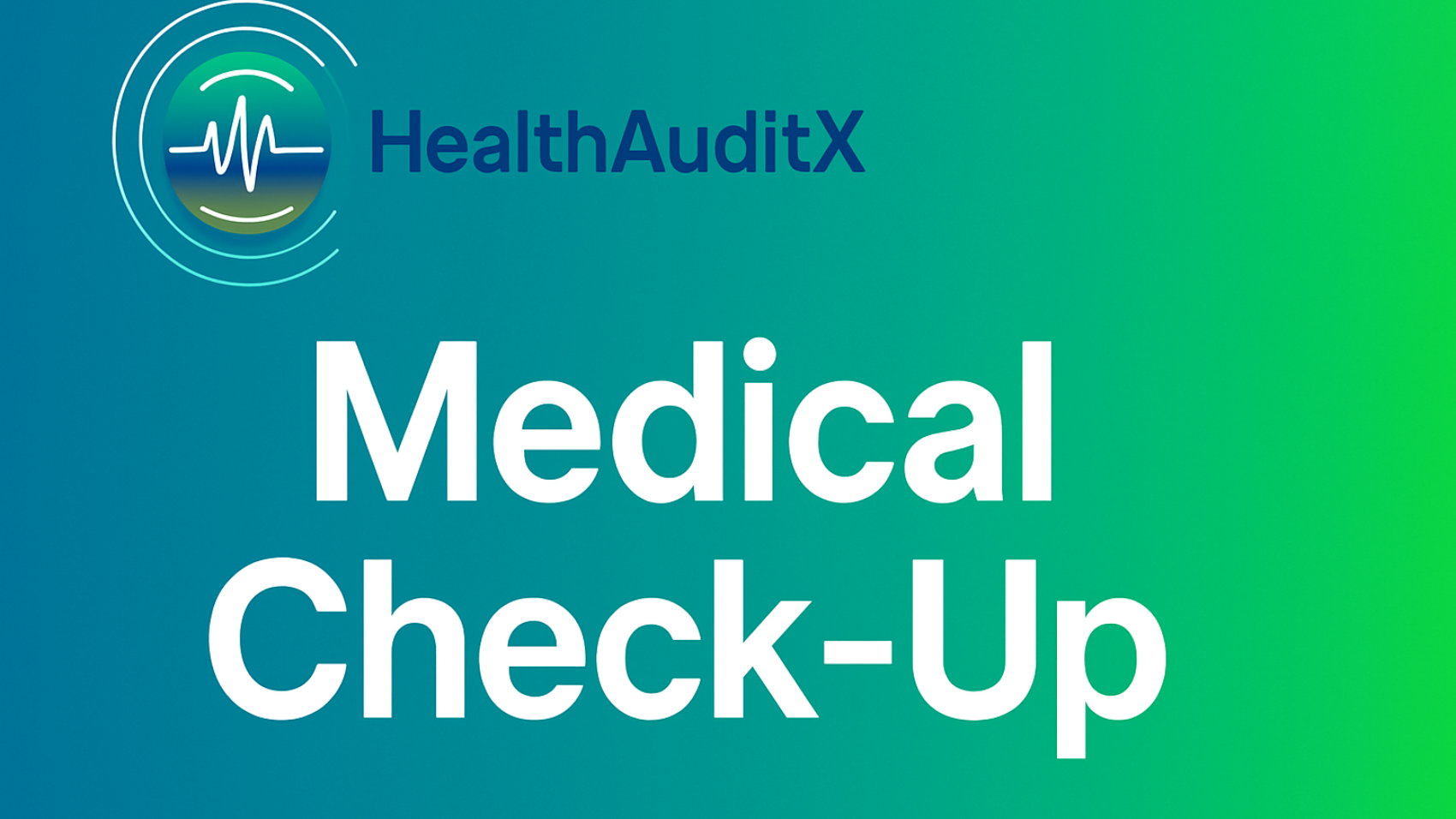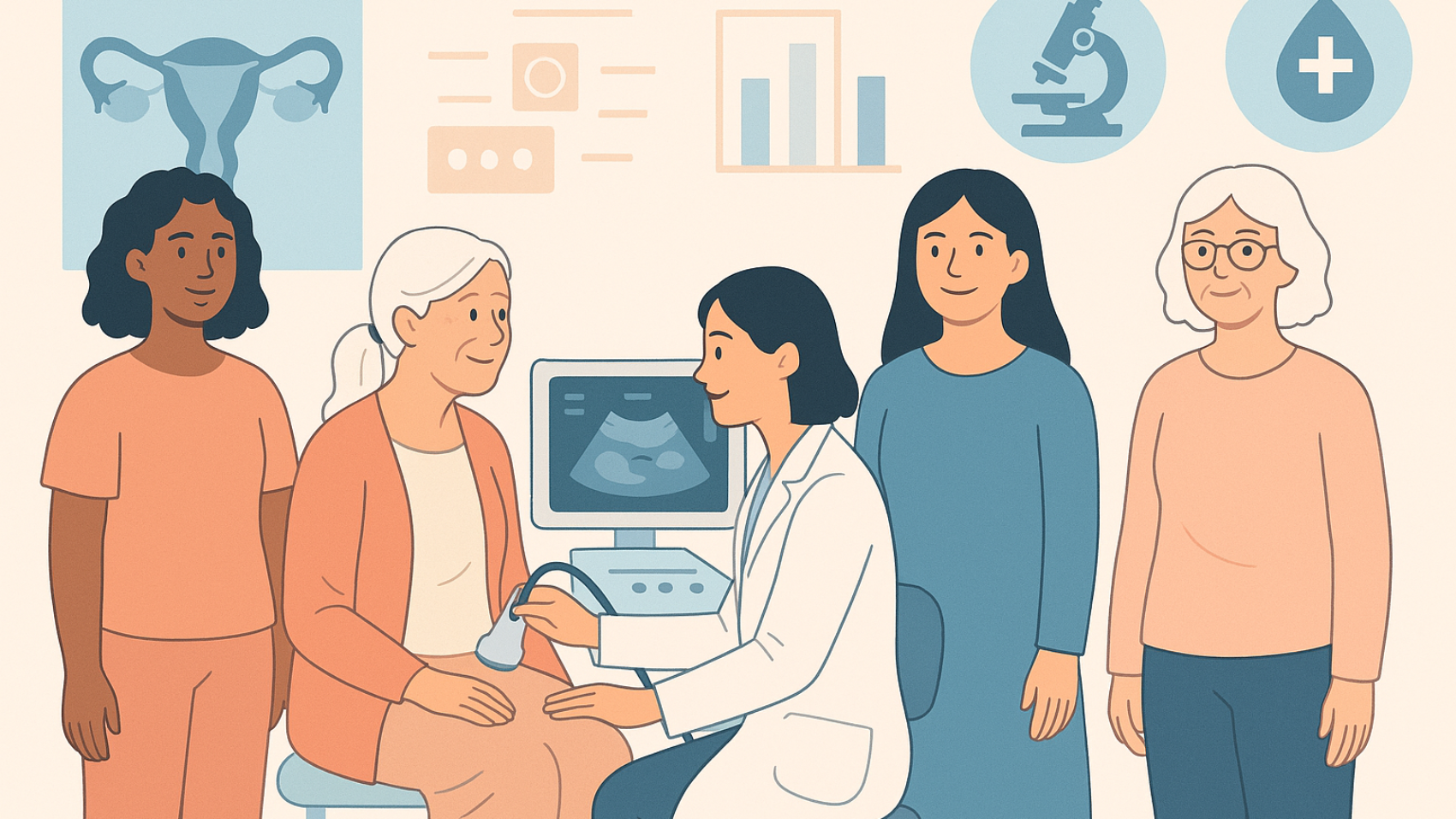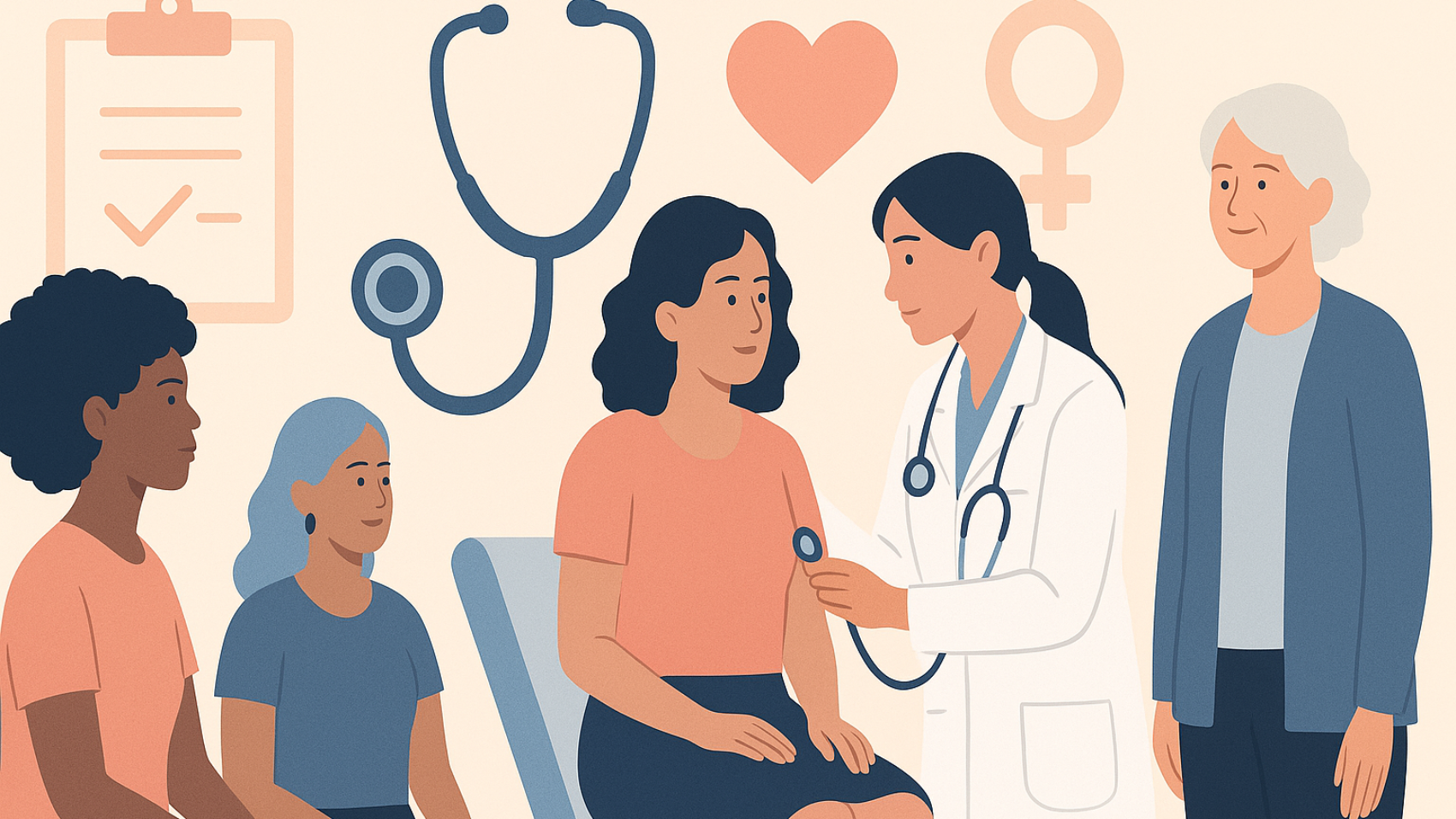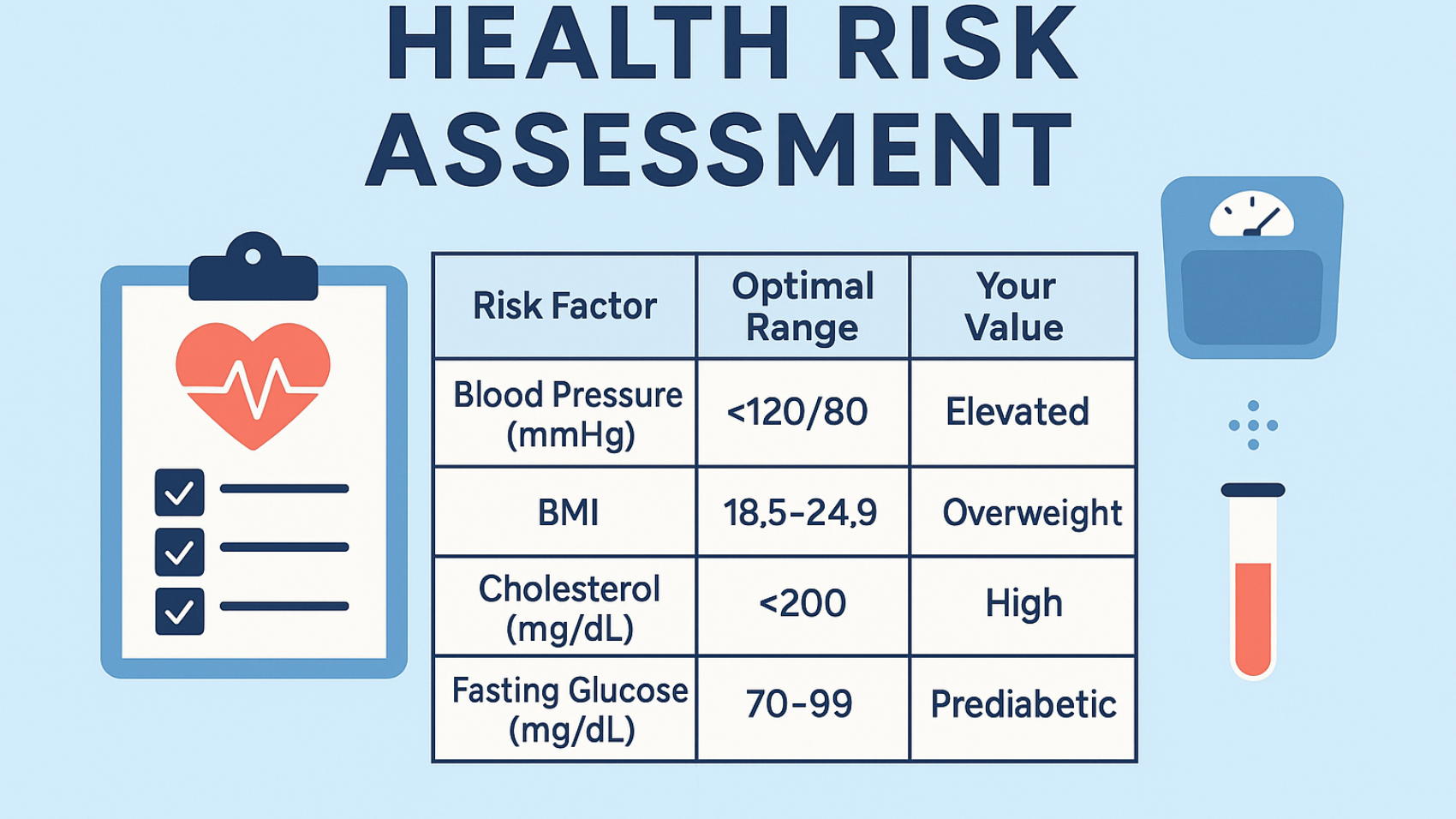Recent studies suggest that Parkinson’s disease (PD) may begin in the gut, not the brain. Scientists have found that imbalances in the gut microbiome can trigger chronic inflammation and disrupt the gut-brain axis, potentially leading to Parkinson’s symptoms years before any neurological signs appear. This emerging connection is changing how we understand, detect, and potentially prevent this complex neurodegenerative disorder.
How the Gut–Brain Axis May Trigger Parkinson’s
Evidence has mounted that Parkinson’s involves the gut–brain connection. Clinical and post-mortem studies show that non-motor gastrointestinal (GI) symptoms, such as constipation, bloating, and gastroparesis, often precede motor symptoms by years.
One theory, known as Braak’s hypothesis, proposes a “gut-first” form of Parkinson’s. It suggests that an environmental toxin or misfolded α-synuclein protein in the gut spreads to the brain through the vagus nerve.
Scientific Evidence Supporting Gut-Origin PD
- Lewy-body α-synuclein aggregates, the pathological hallmark of Parkinson’s, have been found in both enteric neurons and the brain.
- In mice, injecting misfolded α-synuclein into the gut induces brain pathology, while severing the vagus nerve blocks this effect.
- Conversely, other studies support a “brain-first” model, where pathology spreads from the brain to the gut without vagal involvement.
- A large autopsy study found no cases of Lewy pathology confined to the gut, suggesting that gut-origin PD may represent just one subtype.
Thus, researchers now believe Parkinson’s may have multiple subtypes—some starting in the gut, others in the brain.
How Gut Health Impacts Parkinson’s Risk
Chronic gut inflammation, a weakened intestinal barrier, and α-synuclein buildup in the gut are all believed to signal the brain through vagal or blood-borne pathways. Certain gut bacteria, toxins like LPS, and inflammatory metabolites can:
- Activate the immune system and neural pathways.
- Promote α-synuclein aggregation.
- Travel via the vagus nerve to seed brain pathology.
[Figure] Gut–brain axis in Parkinson’s: Chronic gut inflammation and microbiome changes may lead to brain pathology via the vagus nerve and systemic routes. (Adapted from Lim 2023)
Epidemiological Clues: The Gut–Parkinson’s Connection
- Constipation or prolonged laxative use decades earlier is linked to higher PD risk.
- Removing the appendix, which contains α-synuclein, or undergoing full vagotomy, appears to reduce PD risk.
- People with inflammatory bowel disease (IBD) are 2–3× more likely to develop Parkinson’s.
- Notably, IBD patients treated with anti-TNF therapy had ~80% lower Parkinson’s incidence.
These findings suggest that gut inflammation and microbial dysbiosis could play a causal role in triggering Parkinson’s.
Takeaway
The gut may be more than just “digestion central”—it could be the starting point of Parkinson’s disease. As research into the microbiome and gut-brain axis advances, early detection and prevention strategies could shift dramatically, focusing not just on the brain, but the belly.
How Alpha-Synuclein and Gut Dysbiosis Contribute to Parkinson’s Disease
Alpha-Synuclein Aggregation in the Gut
Alpha-synuclein (α-syn) is a naturally occurring protein in neurons. In Parkinson’s disease (PD), it misfolds and clumps into Lewy bodies, which disrupt brain cells and contribute to neurodegeneration. Interestingly, α-syn is not limited to the brain—it is also produced in the enteric nervous system (ENS) of the gut.
Research has repeatedly found aggregated α-synuclein in the gastrointestinal tract of PD patients, often years before motor symptoms appear. For instance:
- Oxidized dopamine, which can result from gut inflammation, accelerates α-syn fibril formation.
- Certain gut bacteria, like E. coli, produce amyloid-like proteins (curli) that can promote α-syn misfolding.
- These misfolded α-syn “seeds” may spread from gut to brain via the vagus nerve in a prion-like process.
Bacterial triggers, such as lipopolysaccharide (LPS) from Gram-negative bacteria, have also been shown to induce PD-like α-syn aggregates in mice. Similarly, exposure to curli-producing bacteria results in neuronal α-syn accumulation and spread.
Figure: Electron micrograph showing Lewy body–like α-syn fibrils (yellow). These aggregates, often triggered by microbial toxins, may travel from the gut to the brain via the vagus nerve.
Challenges in Using Gut α-Syn as a Biomarker
Although promising, detecting gut α-syn in live patients remains difficult:
- A small study found α-syn in only 14% of colon biopsies (8 of 57 PD cases).
- Meta-analyses report sensitivities between 57% and 82%, meaning many PD patients have no detectable α-syn in routine gut tissue samples.
Thus, while gut α-synuclein aggregation offers valuable insight into disease mechanisms, it is not yet a reliable early diagnostic marker.
Gut Microbiome Dysbiosis in Parkinson’s Disease
Parkinson’s is strongly linked to gut microbiome imbalances, also known as dysbiosis. Multiple studies and meta-analyses reveal consistent shifts in PD patients:
🔼 Increased in PD:
- Akkermansia (mucin-degrading)
- Bifidobacteria
- Enterobacteriaceae (e.g., E. coli, Klebsiella)
🔽 Decrease in PD:
- Prevotella
- Faecalibacterium
- Roseburia
These are critical butyrate-producing and fiber-digesting bacteria.
Functional Consequences of Microbiome Shifts
These microbial changes impact gut health and immunity:
- Loss of short-chain fatty acids (SCFAs)—especially butyrate—weakens the intestinal barrier, increases inflammation, and disrupts immune balance.
- A 2024 meta-analysis concluded that the combo of high Akkermansia and low butyrate producers may drive intestinal inflammation in PD.
- Decreased SCFAs in stool also correlate with lower microbial diversity and higher inflammatory cytokines.
Figure: Scanning electron micrograph of fiber-digesting Prevotella species. These beneficial microbes are often depleted in Parkinson’s, compromising gut integrity and immune regulation.
Gut Microbiome and Systemic Immunity
Gut microbes don’t just affect digestion—they influence systemic inflammation and neural health:
- PD patients have elevated LPS-binding protein in blood, correlating with gut α-syn levels.
- High levels of E. coli and Enterobacteriaceae are linked to increased TNF, IL-6, and IFN-γ, activating enteric glial cells and fueling neuroinflammation.
- Some gut bacteria may be neuroprotective, helping degrade α-syn or boosting regulatory T-cells.
Shared Gut Imbalance Between PD and IBD
Interestingly, the gut microbiome profile in PD overlaps with that seen in inflammatory bowel disease (IBD):
- Both conditions show marked depletion of butyrate producers like Roseburia and Faecalibacterium prausnitzii.
- This shared dysbiosis may help explain why IBD patients have a 2–3× higher risk of Parkinson’s.
- Treatments that reduce gut inflammation, like anti-TNF therapy, dramatically lower PD incidence in IBD patients.
Mounting evidence shows that gut health and Parkinson’s disease are deeply connected. From α-synuclein misfolding in the gut to microbial imbalances and systemic inflammation, the gut plays a central role in Parkinson’s onset and progression. Understanding and correcting gut dysbiosis may become a powerful strategy for preventing or slowing this devastating neurodegenerative disorder.
The Role of Gut Inflammation and Barrier Dysfunction in Parkinson’s Disease
Meta Description (≤155 characters):
Explore how gut inflammation and barrier dysfunction contribute to Parkinson’s disease. Discover new insights on the gut-brain axis, biomarkers, and potential therapies.
Intestinal Inflammation and the Gut–Brain Axis in Parkinson’s Disease
Compromised gut barrier function (often referred to as “leaky gut”) is emerging as a key factor in Parkinson’s disease (PD). Studies show that colon biopsies from PD patients reveal reduced tight-junction proteins (like ZO-1 and occludin) compared to healthy controls. One study linked increased gut permeability (measured via urine sugar tests) with colonic α-synuclein accumulation, E. coli overgrowth, and elevated serum LPS-binding protein. Additionally, fecal markers of inflammation (e.g., calprotectin, zonulin) are often elevated in PD patients.
Such intestinal inflammation could drive systemic inflammation, with microbial products such as LPS, H2S, and amyloids entering the bloodstream through the permeable gut and potentially reaching the brain.
Genetic Evidence Supporting Gut Dysfunction in PD
Genetic mutations linked to familial PD, such as in the LRRK2 and PINK1 genes, affect immune responses and gut function. For instance, PINK1-deficient mice show worsened survival of nigral neurons after infection, suggesting that gut inflammation can worsen brain health. Systemic infections in PD patients often trigger exacerbations of motor symptoms, further indicating that peripheral inflammation influences the brain, making the gut an immunological “trigger.”
Clinical and Epidemiological Evidence: Gut Symptoms in PD
Gastrointestinal (GI) issues are widespread in PD, with constipation often preceding diagnosis by a decade or more. Up to 25% of PD patients experience small-intestine bacterial overgrowth (SIBO), leading to bloating and malabsorption. PD patients also commonly suffer from delayed gastric emptying and altered bile acid metabolism. These GI dysfunctions correlate with worsening motor and non-motor symptoms, reinforcing the gut–brain connection in Parkinson’s.
Large cohort studies further support the gut link. One Belgian study identified altered microbial “clusters” in PD patients, with elevated pathogens (e.g., E. coli and Klebsiella) and significantly reduced fiber-fermenters (SCFA producers). Another study found that appendectomy significantly lowers PD risk, possibly due to the appendix’s role in α-synuclein storage and immune regulation.
Exploring Gut-Based Biomarkers for Early Parkinson’s Detection
Given the strong gut–brain axis connection, researchers are investigating gut-based biomarkers for early Parkinson’s detection. Proposed candidates include:
- Fecal or mucosal α-synuclein.
- Inflammatory cytokines.
- Microbial metabolites.
For example, a recent Portuguese study found that transplanting stool from PD patients into mice induced gut inflammation and α-syn aggregation. Although human studies on gut α-synuclein have shown limited sensitivity (~14–57%), they point to a potential biomarker for detecting early-stage PD. However, no validated stool or blood tests are currently available for clinical use, making prodromal signs (e.g., chronic constipation, REM-sleep behavior disorder, olfaction loss) crucial for early diagnosis.
Therapeutic Implications: Microbiome Modification and PD Prevention
The connection between the gut and PD opens up novel avenues for prevention and treatment. Microbiome modulation is a promising strategy, with several approaches showing potential:
Dietary Interventions
Increasing dietary fiber or adopting a Mediterranean-style diet may boost beneficial gut microbes and SCFAs. Studies show that fiber supplementation in PD patients increases butyrate levels in stools, though not to normal levels. In contrast, Western diets high in fat, sugar, and processed foods are associated with dysbiosis and may raise PD risk.
Probiotics and Prebiotics
Small trials suggest that probiotics and prebiotics can relieve PD symptoms. A 4-week trial with fermented milk containing probiotics significantly increased bowel movements and improved stool consistency, reducing laxative use. Another trial with a multistrain probiotic (including Lactobacillus and Bifidobacterium) showed modest motor score improvement, reduced oxidative stress, and lowered systemic inflammation (CRP, insulin resistance).
Fecal Microbiota Transplant (FMT)
FMT has shown promise in reconstituting a healthy microbiome. A Belgian phase-2 trial (GUT-PERFECT) found that donor FMT significantly improved MDS-UPDRS motor scores after 12 months, compared to autologous stool. While a Finnish trial (Scheperjans 2024) showed no significant benefit, the FMT method and donor selection may influence outcomes.
Antibiotics and Immune Therapies
Antibiotics like doxycycline and minocycline, known for their anti-inflammatory properties, have shown neuroprotective effects in animal models. Given the success of anti-TNF therapies in reducing PD risk in IBD patients, these therapies may be repurposed to treat PD by targeting gut inflammation.
Lifestyle Modifications
Regular exercise and smoking cessation are known to reduce PD risk, likely via the microbiome. Exercise can enrich butyrate-producing bacteria, while nicotine may enhance gut motility and modulate gut flora. A holistic approach combining diet, microbiome therapies, and dopaminergic drugs is emerging as an effective treatment strategy.
Conclusion: The Gut as a Target for PD Treatment and Prevention
Interdisciplinary research across neurology, gastroenterology, and microbiology points to the gut as both a potential origin and accelerator of Parkinson’s disease. Chronic dysbiosis, intestinal barrier dysfunction, and inflammation may trigger or worsen α-synuclein aggregation, initiating a gut–brain feedback loop. Current research supports the existence of multiple PD subtypes, including those with a “gut-first” origin. The gut offers an exciting opportunity for early intervention through therapies like diet modification, probiotics, and FMT, all of which show potential in preclinical and early-stage human trials.
As research continues, the gut-brain axis will play a critical role in developing new biomarkers, preventive strategies, and treatments for Parkinson’s disease. The future of PD care may involve not only targeting the brain but also treating the gut to interrupt disease progression.
Sources (Grouped by Section)
Mechanism & Pathology
- Braak’s Hypothesis (2003): Staging of brain pathology related to sporadic Parkinson’s disease — https://doi.org/10.1016/S0197-4580(02)00065-9
- Transneuronal α‑Synuclein Spread (2019): Pathologic α‑synuclein propagation from gut to brain — https://doi.org/10.1016/j.neuron.2019.05.035
- α‑Synuclein in the Colon (2012): Is α‑synuclein in the colon a premotor PD biomarker? — https://doi.org/10.1002/mds.25015
Microbiome Dysbiosis
- Gut Microbiota & Clinical Phenotype (2015): Microbiota composition in PD patients — https://doi.org/10.1002/mds.26069
- Shared Dysbiosis in PD & IBD (2024): Overlapping gut imbalances in Parkinson’s and IBD — https://doi.org/10.1080/19490976.2023.1976432
- LPS‑Binding Protein Correlation (2023): Gut inflammation marker in PD — https://doi.org/10.1186/s12974-023-02815-1
Epidemiology & Risk Factors
- Anti‑TNF Therapy & PD Risk (2018): TNF inhibitors lower PD incidence in IBD patients — https://doi.org/10.1001/jamaneurol.2018.0914
- Gut–Brain Axis Review (2019): Role of microbiota in PD etiology — https://doi.org/10.1038/s41531-019-0084-6
Therapeutic Interventions
- FMT Neuroinflammation (2022): Fecal transplant reduces neuroinflammation in PD models — https://doi.org/10.1038/s41522-022-00295-5
- Diet, Microbiome & Neurodegeneration (2020): Impact of diet on gut microbiome and neurodegenerative disease — https://doi.org/10.1097/WCO.0000000000000862

